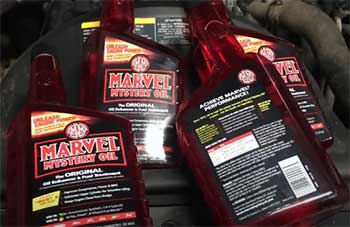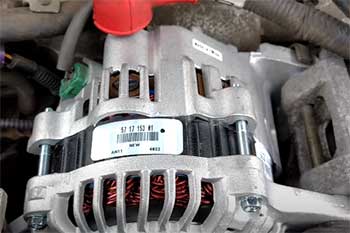When it comes to tires, I don’t settle for average. I want performance, durability, and peace of mind on the road.
After spending years trying different brands, I finally narrowed it down to two of Michelin’s best offerings: the Michelin Defender 2 and the Michelin Primacy.
If you’re stuck between these two, I’ve got you covered. I’ve used both and in this article, I’ll walk you through what they’re good at, where they fall short, and which one might suit your driving needs better.
Michelin Defender 2 Vs. Primacy – Quick Comparison
| Feature | Michelin Defender 2 | Michelin Primacy |
| Type | All-season touring | Grand touring |
| Ride Comfort | Very smooth, plush ride | Quiet, smooth with precise handling |
| Tread Life | Up to 85,000 miles | Up to 60,000 miles |
| Noise Level | Low noise | Extremely quiet |
| Wet Traction | Reliable | Excellent |
| Snow Handling | Light snow only | Better in light snow |
| Fuel Efficiency | Good | Excellent |
| Target Vehicle Type | Sedans, minivans, SUVs | Sedans, coupes, luxury vehicles |
| Price Range | Mid-to-high | Premium |
| Warranty | 85,000 miles | 55,000 to 60,000 miles |
My Experience with Michelin Defender 2 and Primacy
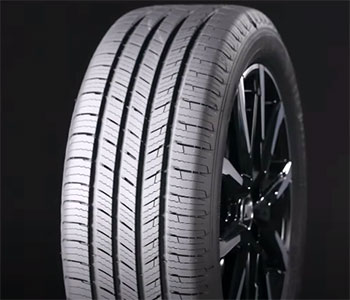
When I installed the Michelin Defender 2 on my family SUV, I immediately noticed how confident I felt during daily drives.
The handling was stable, the road noise was surprisingly low, and even during those sharp turns, it felt incredibly balanced.
What stood out most was the comfort — it smoothed out rough roads like butter.
After a few long road trips and a bit of city commuting, I realized just how long-lasting these tires were. Even after 40,000 miles, there was barely any noticeable wear.
I’ve rotated them regularly and they’ve held up with remarkable consistency. In rainy conditions, the grip was solid.
I did notice, however, that in snowy conditions — especially when roads weren’t plowed — they struggled a bit more than I would’ve liked.
Then came my switch to Michelin Primacy for my sedan. If Defender 2 felt plush, the Primacy felt refined. The ride became noticeably quieter. I could feel the tires hugging the road in a more controlled, luxurious way. Even at higher speeds, they offered superb grip and stability.
I live in an area where we get sudden downpours and the occasional light snow, and I was impressed at how well the Primacy handled both. It wasn’t just good in wet conditions — it felt reassuring.
One downside was tread life. Compared to Defender 2, they seemed to wear faster. Around the 40,000-mile mark, they were already showing their age, even though I took care of rotations and pressure. But I must say, while they lasted, they were nothing short of exceptional.
So which one do I prefer? That depends on what you’re driving and how you drive. Let’s break it down further.
Which Tire Gives Better Value for the Money?

Let’s talk dollars and sense — because at the end of the day, performance is only part of the equation.
After driving tens of thousands of miles on both, I had to ask myself: which of these two tires actually gives you more bang for your buck?
From my experience, the Michelin Defender 2 is the clear winner in terms of long-term value.
The up-front cost may be slightly lower or comparable to the Primacy depending on size, but what makes it shine is how long it lasts.
I’ve had mine run strong beyond 70,000 miles with consistent rotation and care. That’s serious value when you consider how infrequently I had to think about replacements.
On the other hand, the Michelin Primacy delivers a premium feel — but that premium also comes at a cost.
The tread wears out quicker, and for someone clocking regular highway mileage, that adds up.
You’ll likely end up replacing the Primacy a full year or two earlier than the Defender 2 if you drive often.
Now, if comfort and quiet are what you truly value, and you’re driving a luxury vehicle or using your car mostly for short, smooth city drives, Primacy still offers a good return on investment — just in a different way.
So if your wallet is steering the decision as much as your wheel is, the Defender 2 gives you longevity, dependability, and fewer tire-shop visits. That alone made me appreciate its overall value far more.
Pros and Cons Michelin Defender 2
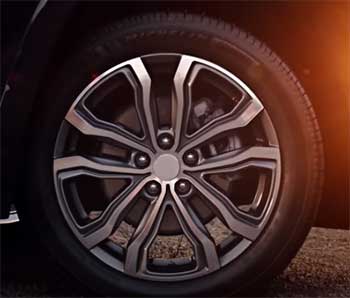
Pros:
- Long-lasting tread life: With a promise of up to 85,000 miles, these are some of the longest-lasting tires I’ve ever used.
- Great all-season reliability: They handled dry and wet roads well, and even light snow didn’t feel too risky.
- Excellent ride comfort: The ride was always quiet, even on less-than-perfect roads.
- Lower cost over time: Because they last longer, I saved money in the long run.
- Fuel-efficient design: Helped with maintaining good MPG, especially on highway drives.
Cons:
- Not ideal for winter conditions: In moderate to heavy snow, performance drops noticeably.
- Slightly stiffer sidewalls: You may feel small vibrations more than with softer tires.
- Less sporty feel: If you love quick steering response, this may feel a bit slow.
- Bulky tread pattern: Can hum a little more as it ages.
- Better for long-haul and everyday drivers: Not great for spirited or performance-oriented driving.
Pros and Cons of Michelin Primacy
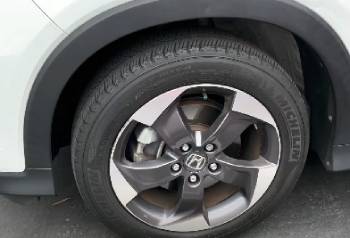
Pros:
- Ultra-smooth ride: These felt like gliding over the road — the comfort was on another level.
- Great wet traction: I never worried during rainstorms or slick road conditions.
- Exceptionally quiet: One of the quietest tires I’ve ever used on a sedan.
- Responsive handling: Especially good for winding roads or city driving.
- Premium feel: Ideal if you’re driving a luxury or high-end vehicle.
Cons:
- Shorter tread life: Despite great performance, they don’t last as long as Defender 2.
- Higher price tag: Premium performance comes with a premium cost.
- Not made for rugged use: Best on clean, smooth roads — not for rough terrain.
- Can wear unevenly if not rotated: Requires frequent maintenance to stay in shape.
- Limited winter performance: Still better than some, but not a substitute for snow tires.
Maintenance Tips That Helped Me Extend Tire Life
- Tire performance isn’t just about what you buy — it’s how you care for them that makes a difference. Whether you go with Defender 2 or Primacy, here are my maintenance tips to get the most out of your investment:
- Rotate tires regularly: I rotate mine every 6,000 to 8,000 miles. This keeps the wear even and prolongs their lifespan.
- Check tire pressure monthly: Low pressure eats up tread life and fuel economy. I keep a digital tire gauge in my car and check it with my oil changes.
- Inspect for damage: Run your hand around the tire. If you feel uneven wear, bubbles, or sharp objects lodged in the tread, deal with it immediately.
- Balance and alignment: Every 12,000 miles, I get an alignment check. It makes a huge difference in road feel and wear.
- Drive gently: Avoid hard stops, jackrabbit starts, and sharp cornering. These habits can wear tires faster.
- Store seasonally: If you switch to winter tires, store the unused ones in a cool, dry place out of sunlight.
Michelin Defender 2 Vs. Other Brands
- Michelin Defender 2 Vs. Bridgestone Turanza QuietTrack
Compared to Bridgestone Turanza QuietTrack, Defender 2 holds a clear edge in durability. While QuietTrack may win in overall comfort and silence, I found it wore down faster and didn’t quite match Defender 2’s resilience on rougher surfaces.
If you want a quieter luxury ride and don’t mind replacing tires sooner, QuietTrack might be your pick. But if long life and versatility matter more, Defender 2 takes it.
- Michelin Primacy Vs. Goodyear Assurance WeatherReady

Goodyear’s Assurance WeatherReady tires are excellent in changing weather — they actually do better than Primacy in snowy or icy conditions.
However, they’re slightly louder and stiffer.
Primacy wins when it comes to comfort and highway cruising, while WeatherReady suits someone in unpredictable climates.
- Michelin Defender 2 Vs. Continental TrueContact Tour
TrueContact Tour is a solid match for Defender 2 in terms of ride comfort and fuel efficiency. But from my experience, Defender 2 gave me better overall mileage and long-term grip.
TrueContact might edge it out in steering response, but not enough to make me switch. If you’re mostly a city driver, either could work well — for long trips, I’d still pick Defender 2.
- Michelin Primacy Vs. Pirelli Cinturato P7 All Season Plus
Pirelli’s P7 is known for high performance and a comfortable ride. I used them for a while before switching to Primacy, and honestly, Primacy felt smoother and quieter.
Pirelli gave better steering precision but wore faster. Both are good tires, but for peace and quiet, I’d go with Primacy.
- Michelin Defender 2 Vs. Yokohama Avid Ascend GT
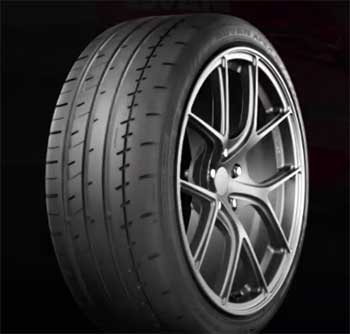
Yokohama‘s Avid Ascend GT impressed me with value.
It’s a cheaper tire with surprisingly good traction and comfort.
However, Defender 2 has the edge in tread life and long-term durability.
If you’re on a tighter budget, the Yokohama will treat you well — but it won’t last as long as the Defender 2.
Frequently Asked Questions (FAQs)
Yes, the Michelin Primacy is known for being one of the quietest grand touring tires, ideal for luxury or sedan drivers.
They can last up to 85,000 miles with proper care, making them one of the longest-lasting tires on the market.
It’s an all-season touring tire designed for durability, comfort, and dependable everyday driving.
Among the options I’ve used, Michelin Primacy wins in terms of being the quietest, especially on smooth highway pavement.
Final Thoughts
If you want long tread life, solid all-around performance, and cost-effectiveness, Michelin Defender 2 is my top choice. It’s been reliable through every season and gave me the confidence to take long trips without worry.
But if you prioritize quietness, smooth rides, and daily city comfort, Michelin Primacy is a fantastic pick. I felt pampered with every drive, even if I had to replace them sooner.
So what do you care about most — endurance or elegance? Whichever route you choose, you’ll get Michelin quality. You just need to match your priorities to the right set.
